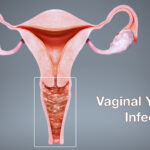Can Sprinolactone Cause Yeast Infections?

A vaginal yeast infection, also known as candidiasis, is a common condition. A healthy vagina contains bacteria and some yeast cells. But when the balance of bacteria and yeast changes, the yeast cells can multiply. This causes itching, swelling, and irritation. Treating a vaginal yeast infection can relieve symptoms within a few days. Sometimes a more complicated yeast infection may occur with more severe symptoms. Four or more infections may arise in 1 year.
Vaginal yeast infections aren’t considered a sexually transmitted infection (STI), commonly known as sexually transmitted disease (STD). Sexual contact can spread it, but women who aren’t sexually active can also get them.
What is Spironolactone?
Spironolactone is a medication commonly prescribed to treat conditions like high blood pressure, heart failure, and edema (fluid retention). It is also used off-label in the treatment of hormonal conditions such as polycystic ovary syndrome (PCOS) and hirsutism. While spironolactone is generally considered safe and effective, there is some debate and concern regarding its potential to cause yeast infections.
In this article, we will explore the connection between spironolactone and yeast infections and provide insights into the factors to consider when taking this medication.
Understanding Spironolactone
Spironolactone, also known by its brand name Aldactone, is a medication belonging to a class of drugs called potassium-sparing diuretics. It primarily works by blocking the action of a hormone called aldosterone, which regulates the balance of sodium and potassium in the body. By inhibiting aldosterone, spironolactone promotes the excretion of excess sodium and water, helping to reduce fluid buildup and lower blood pressure.
Spironolactone and Yeast Infections
The link between spironolactone and yeast infections is not entirely straightforward. Spironolactone does not directly cause yeast infections, but it may indirectly contribute to their occurrence. Here are some factors to consider:
1. Hormonal Changes: Spironolactone is often prescribed to manage hormonal conditions like PCOS, which can result in hormonal imbalances. This hormonal fluctuation may impact the body’s pH levels, potentially creating an environment conducive to yeast overgrowth.
2. Dehydration: Spironolactone’s diuretic effect can lead to increased urination and potential dehydration. Dehydration can weaken the immune system and affect the balance of beneficial bacteria, potentially allowing yeast to thrive.
3. Antibiotics: Some individuals taking spironolactone may be prescribed antibiotics simultaneously. Antibiotics can disrupt the balance of microorganisms in the body, potentially leading to yeast overgrowth.
4. Personal Susceptibility: Some people are more prone to yeast infections than others due to individual factors, such as genetics or a history of recurring infections.
Preventing Yeast Infections While on Spironolactone
If you are taking spironolactone and are concerned about the risk of yeast infections, there are steps you can take to reduce the likelihood of experiencing one:
1. Stay Hydrated: Spironolactone’s diuretic effect can lead to increased urine production, which may result in dehydration. To counteract this, it is crucial to ensure you drink an adequate amount of water daily. The general recommendation is around eight 8-ounce glasses (about 2 liters) of water per day, but individual hydration needs may vary. Staying properly hydrated can help maintain the body’s fluid balance and prevent an overly dry or alkaline environment that may promote yeast overgrowth.
2. Maintain Good Hygiene: Practicing good personal hygiene is essential to minimize the risk of yeast infections, especially in warm and moist areas of the body. Here are some hygiene tips to consider:
• Keep the genital area clean and dry.
• Avoid using harsh soaps or douches, as they can disrupt the natural balance of vaginal flora.
• Use mild, fragrance-free soaps or cleansers for intimate areas.
• Wear breathable, cotton underwear to reduce moisture and friction.
• Change out of wet or sweaty clothing promptly, such as swimsuits or workout gear.
• Avoid tight-fitting pants or pantyhose, which can trap moisture and heat.
3. Probiotics: Probiotics are beneficial bacteria that can help maintain a healthy balance of microorganisms in the body, including the gut and genital areas. Consider taking probiotic supplements or consuming probiotic-rich foods, such as yogurt, kefir, and kimchi. Probiotics can help promote a healthy gut flora, which may indirectly reduce the risk of yeast overgrowth. Discuss the use of probiotics with your healthcare provider to determine the most suitable options for your specific situation.
4. Report Symptoms: If you suspect a yeast infection, it’s crucial to seek medical advice promptly. Early treatment is essential to prevent the infection from worsening and causing discomfort. Typical symptoms of a yeast infection include itching, burning, unusual discharge, and discomfort during sexual intercourse. Your healthcare provider can confirm the diagnosis and recommend appropriate treatment, which may include antifungal medications.
5. Discuss with Your Healthcare Provider: If you are experiencing recurrent yeast infections while taking spironolactone, it’s essential to discuss your concerns with your healthcare provider. They can provide guidance on managing the side effects and may consider adjusting your treatment plan or recommending alternative medications. It’s important to maintain open and transparent communication with your healthcare team to ensure your health and well-being.
Conclusion
While spironolactone is not a direct cause of yeast infections, certain factors related to its use may increase the risk of developing them, especially in individuals with pre-existing susceptibility. If you are taking spironolactone and are concerned about yeast infections, it’s essential to maintain good hygiene, stay hydrated, and seek medical advice as needed. As with any medication, it’s important to communicate openly with your healthcare provider to address any concerns or side effects and make necessary adjustments to your treatment plan. READ: Foods To Avoid While Taking Spironolactone





